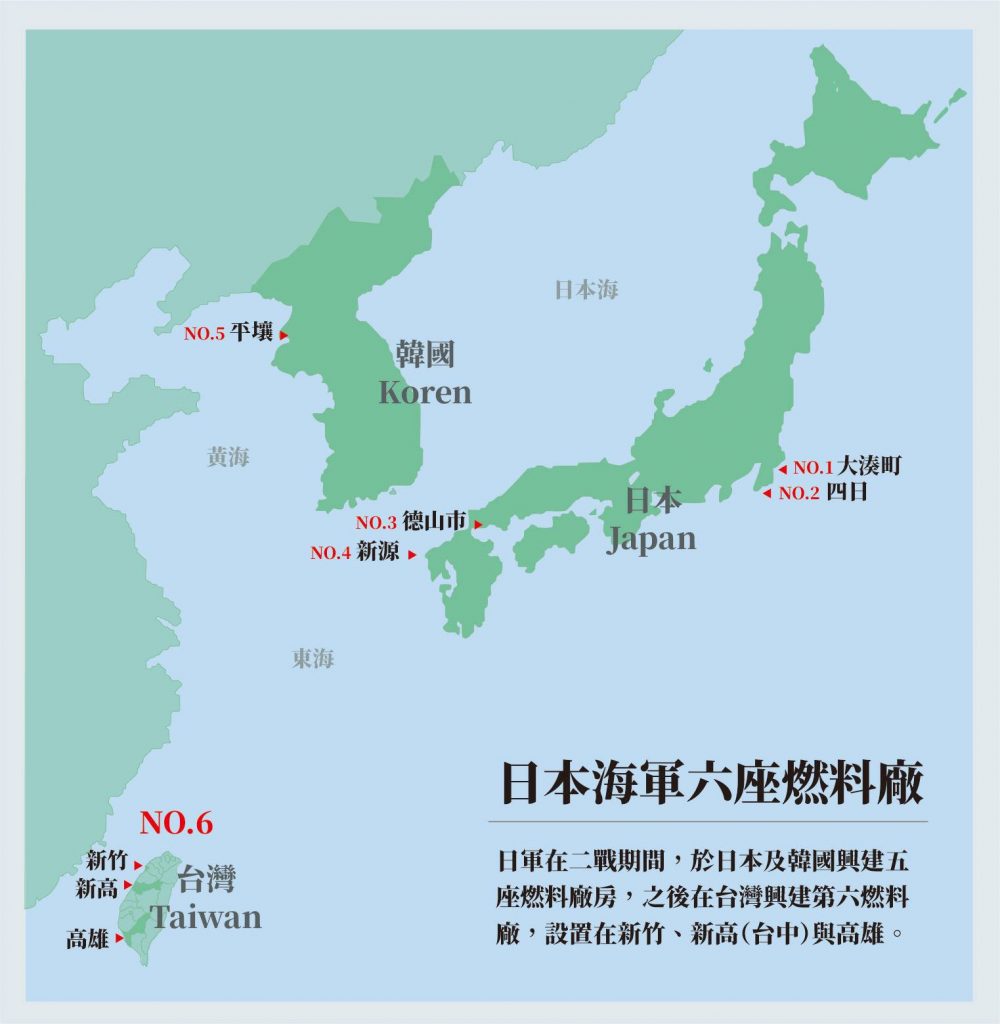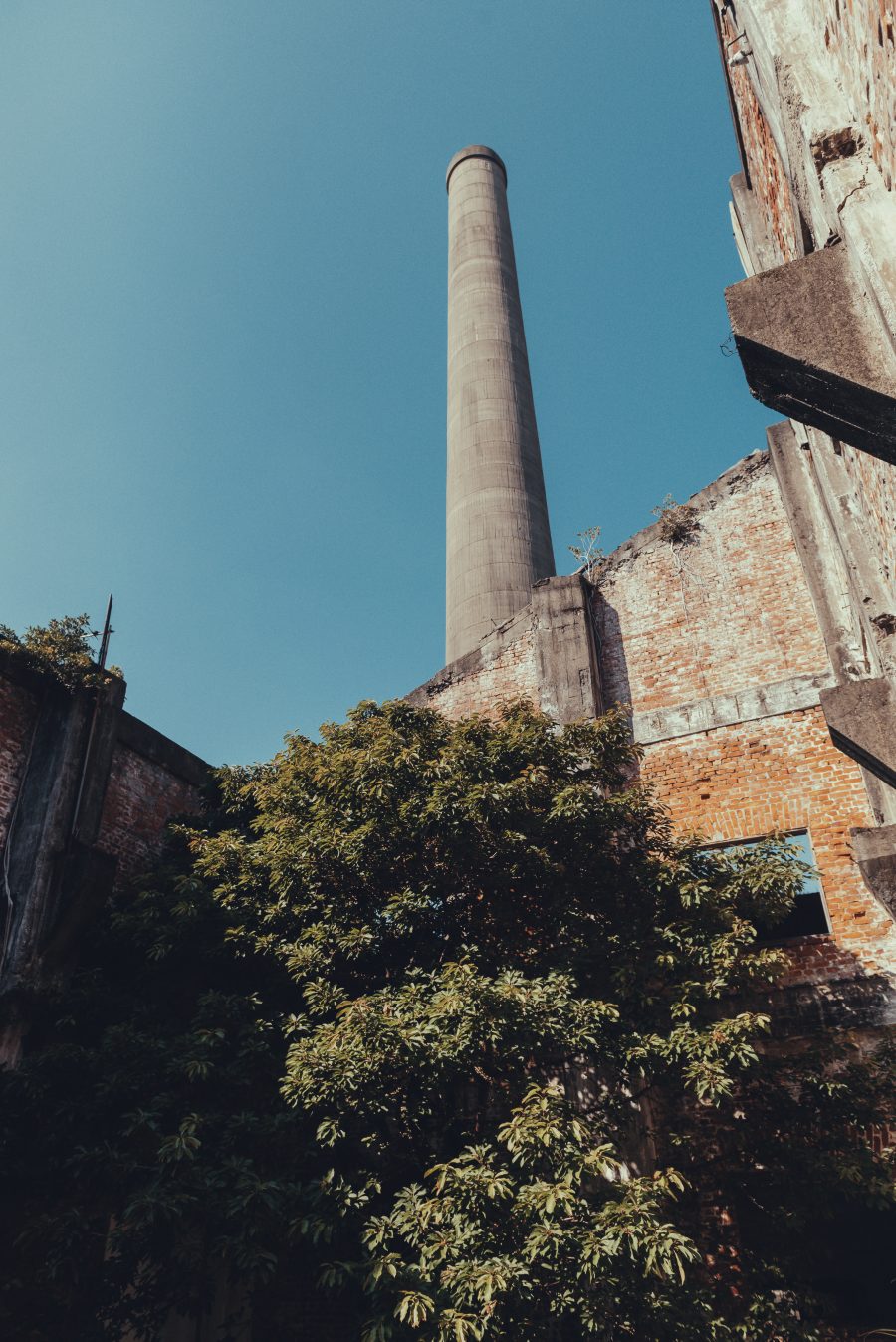六燃歷史

日本海軍燃料廠一共有六座,前四座在日本,第五座在北韓平壤。二戰時期因戰爭燃料的需求,日本於1943年將「海軍第六燃料廠」建置在台灣,又分高雄本部、新竹廠、新高廠三個廠區。新竹六燃廠區佔地約300餘公頃,約在光復路和公道五兩條主要幹道之間,範圍大致落在現今新竹市中心與科學園間之樞紐地帶,也是新竹市最早有系統且大規模建設的軍事工業基地,當年建廠目的是為了合成用來添加入飛機燃料油中的異辛烷。 1949年國共內戰結束,空軍工程聯隊撤守駐紮於此,之後新竹六燃廠房被用來安置軍眷,逐漸形成特殊的「樓中房」眷村聚落。1956年清華大學在當年的新竹六燃腹地範圍內復校,首先成立原子科學研究所;1958年交通大學也緊鄰清華校區復校,之後在附近設置工研院、中油,這些都與日本海軍第六燃料廠新竹支廠有密切的地緣關係,也是後來新竹科學園區發展的重要基礎。大煙囪廠房在2010年登錄為歷史建築,文化部啟動「新竹日本海軍第六燃料廠與眷村聚落,歷史現場再造與活化計畫」。2013年最後一家眷戶搬離後,新竹市文化局對大煙囪廠房基地目前所存留之土地與設施,逐一提出保存與活化的規劃。
The Imperial Japanese Navy’s Fuel Factory was a “family” comprising six branches. The first four branches were located in Japan, and the fifth in Pyongyang, Korea. In 1943, the Sixth Fuel Factory was set up in Taiwan given the Japanese demand for fuel during the Second World War. Its headquarters was in Kaohsiung, with two branches in Hsinchu and Nītaka (Taichung) respectively. Covering an area of more than 300 hectares, the Hsinchu branch was located between Guangfu Road and Gongdao 5th Road (approximately the downtown area and the Hsinchu Science Park nowadays). It was the first systematic, large-scale military industrial base in Hsinchu City. This branch’s raison d’être was exactly to produce isooctane that helped enhance the aviation fuel quality.
After the end of the Chinese Civil War in 1949, the Air Force Engineering Wing retreated to Taiwan and stationed in the Sixth Fuel Big Chimney Factory, gradually forming a peculiar settlement of military dependents’ village known for its “embedded houses within the factory.” In 1956, the National Tsing Hua University was reactivated in the hinterland of the factory with the Institute of Nuclear Science as its first research unit, followed by the reactivation of the National Chiao Tung University (NCTU) nearby in 1958. The Industrial Technology Research Institute and the fuel depot of Taiwan’s CPC Corporation were located in the vicinity of the factory. Geographically linked with the factory, these constructions have laid a solid foundation for the establishment and development of the Hsinchu Science Park. In 2010, the Big Chimney Factory was registered as historic architecture, and the Ministry of Culture launched the public infrastructure investment project “Regeneration of Historic Sites” that incorporates the factory and the military dependents’ village. After all the military dependents were relocated from this site in 2013, the Cultural Affairs Bureau of Hsinchu City also proposed several projects to preserve and revitalize this historic site and its facilities.
